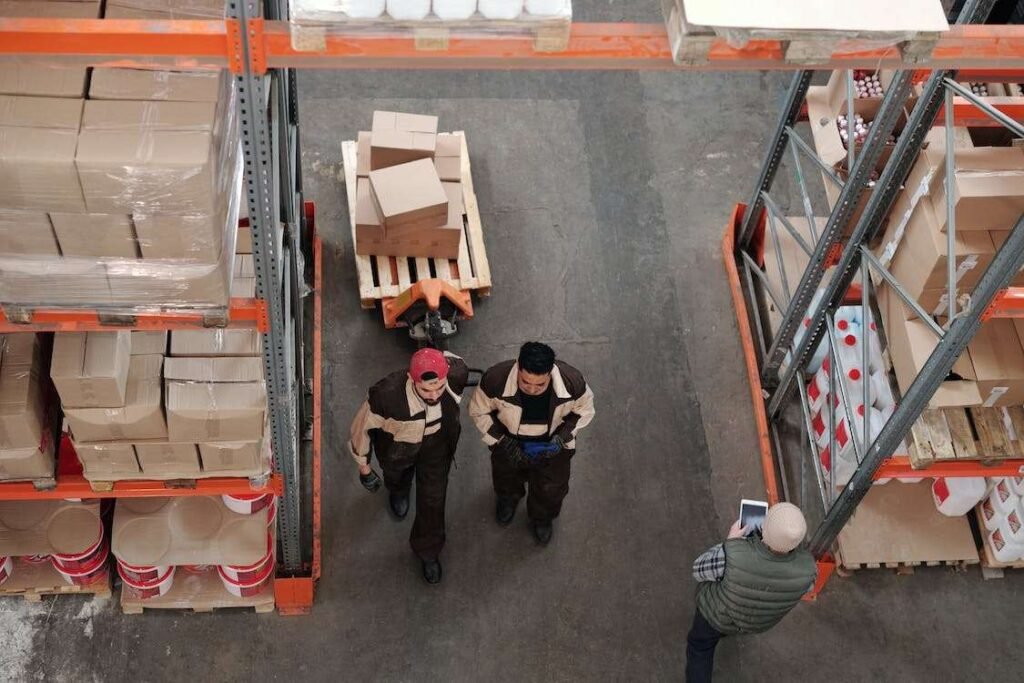
How To Ensure A Safe And Clean Working Environment
Maintaining a safe and clean working environment is paramount to the productivity, morale, and well-being of employees. It not only minimizes the risk of accidents, injuries, and illnesses but also contributes to employee satisfaction and overall work efficiency.
Understanding how to ensure such an environment involves implementing effective cleanliness guidelines, fostering a culture of safety, and adhering to health and safety regulations. This exploration delves into the essential steps to actualize a safe and clean work environment, ensuring that both employers and employees reap the benefits of a well-maintained workspace.
Table of Contents
Regular Cleaning
Regular cleaning is the cornerstone of a safe and clean working environment. It involves routine tidying, dusting, sweeping, mopping, and disinfecting workspaces, reducing the accumulation of dirt, clutter, and potential hazards. Regular cleaning eliminates germs, bacteria, and allergens, contributing to a healthier environment and reducing the risk of disease transmission.
It also prevents the buildup of waste materials that could potentially cause accidents, such as slips or falls. Additionally, investing in options like industrial hygienist mold testing services or hazardous materials abatement can help identify and eliminate further risks, ensuring a properly sanitized and safe environment. Furthermore, a clean and organized workspace can enhance employees’ productivity and morale, as it fosters feelings of comfort, satisfaction, and professional pride.
Thus, regular cleaning is an integral part of maintaining a safe and clean working space.
Proper Waste Disposal
Proper waste disposal is another critical aspect of ensuring a clean and safe working environment. It involves creating effective waste management strategies, including recycling and composting, to responsibly dispose of all waste materials.
By segregating waste into recyclables, compostable, and landfill-bound items, businesses can significantly reduce the volume of waste that ends up in landfills. Proper waste disposal prevents the accumulation of waste in and around the workspace, eliminating potential hazards such as fire risks, pests, or bacteria and viruses that could cause ill health.
Furthermore, it also demonstrates a commitment to environmental sustainability, contributing to the company’s image as a responsible corporate citizen.
By integrating proper waste disposal practices, workplaces can protect their employees’ health and promote a cleaner, safer, and more environmentally-friendly workspace.
Safe Storage
Safe storage serves as the next pivotal aspect in maintaining a clean and secure work environment. It involves organizing and storing all tools, equipment, and materials in a designated place to prevent accidents that could result from misplaced items. Businesses should consider installing safety cabinets, racks, and lockers to store hazardous materials, flammable substances, and heavy equipment, reducing the risk of exposure and accidents.

Additionally, it is crucial to label storage areas and containers clearly, especially those containing hazardous substances, to ensure correct handling and avoid misplacement. Safe storage also extends to managing digital data securely, protecting sensitive business and employee information from potential breaches. By committing to safe storage practices, workplaces can enhance safety, improve productivity by reducing time spent searching for items, and create a clutter-free, efficient workspace.
Safety Guidelines
These guidelines provide a set of standard procedures for employees to follow, which are intended to prevent workplace accidents, injuries, and illnesses. They cover a wide range of issues, including the correct use of machinery and equipment, handling of hazardous substances, and rules for maintaining personal hygiene and cleanliness.
Safety guidelines also include procedures for emergency situations such as fires or chemical spills, ensuring that employees are well-prepared and can respond effectively to minimize harm. Regular training sessions should be conducted to familiarize employees with these guidelines, thereby fostering a culture of safety consciousness. Adherence to safety guidelines also facilitates the maintenance of a clean environment, as they often include directives for regular cleaning and waste disposal.
By ensuring that employees understand and follow these guidelines, the risk of accidents due to clutter, spills, or improper disposal of hazardous waste can be greatly reduced.
Air Quality
Investing in good air quality is crucial for establishing a clean and safe working environment. Airborne pollutants, such as dust, mold spores, and harmful pathogens, can lead to a range of health issues including allergies, respiratory illnesses, and weakened immune systems.
Poor air quality can also negatively impact cognitive function, leading to decreased productivity and morale. Employers can improve air quality by ensuring proper ventilation, regularly changing air filters and using air purifiers to remove airborne contaminants.
Additionally, indoor plants can serve as natural air purifiers, absorbing carbon dioxide and other harmful toxins while releasing oxygen. Regular testing of air quality can also help detect any potential issues early and allow for timely intervention. Thus, investing in maintaining good air quality is an essential aspect of ensuring a clean, healthy, and safe working environment.
Clutter-Free Environment
Maintaining a clutter-free environment is essential in upholding a clean and safe working space. Clutter not only hinders physical movement, potentially leading to accidents such as trips and falls, but also creates hiding spots for dust, allergens, and pests, contributing to an unhygienic environment. Furthermore, clutter can make it difficult to clean and sanitize surfaces effectively, facilitating the spread of germs and bacteria. It could also act as fuel in case of a fire, posing a significant safety risk.
On the other hand, a clutter-free workspace promotes efficiency by making it easier to locate and access necessary items, thereby saving time and reducing stress.
It also lends itself to a more professional, organized appearance, boosting morale and creating a conducive atmosphere for productivity. Therefore, regular decluttering practices, proper organization, and mindful storage are vital in maintaining a clutter-free, safe, and clean working environment.
Adherence to Regulations
Adherence to established health, safety, and environmental regulations is a fundamental aspect of maintaining a clean and safe working environment.
These regulations, stipulated by local, state, or federal authorities, and sometimes global standards, provide a comprehensive framework for ensuring workplace safety and cleanliness.
They cover aspects like waste disposal, use of personal protective equipment, machine safety, chemical handling, and cleanliness norms. Compliance with these regulations not only prevents workplace accidents and illnesses but also aids in avoiding legal issues and penalties that could arise from non-compliance.
Regular audits or inspections can help ensure that these standards are being met consistently.
By strictly adhering to such regulations, businesses can ensure a clean, safe, and legally-compliant work environment. This in turn fosters a culture of responsibility and care for personal and collective well-being within the organization, thereby enhancing productivity and job satisfaction.
Conclusions:
In conclusion, maintaining a safe and clean working environment is a multifaceted endeavor that requires a conscientious, proactive approach from both employers and employees. It involves ensuring safe storage practices, adherence to safety guidelines, maintaining high air quality, creating a clutter-free environment, and strict compliance with established regulations.
By implementing these measures, businesses can foster a workplace culture centered on safety and cleanliness, thereby enhancing productivity, boosting morale, and most importantly, ensuring the well-being of all workers.
Realistically, maintaining a safe and clean work environment is not merely a regulatory obligation or a one-time effort, but a continual process of vigilance and improvement. Remember, a secure and clean workplace directly correlates to a healthy, efficient, and content workforce.
Last Updated on August 15, 2023













